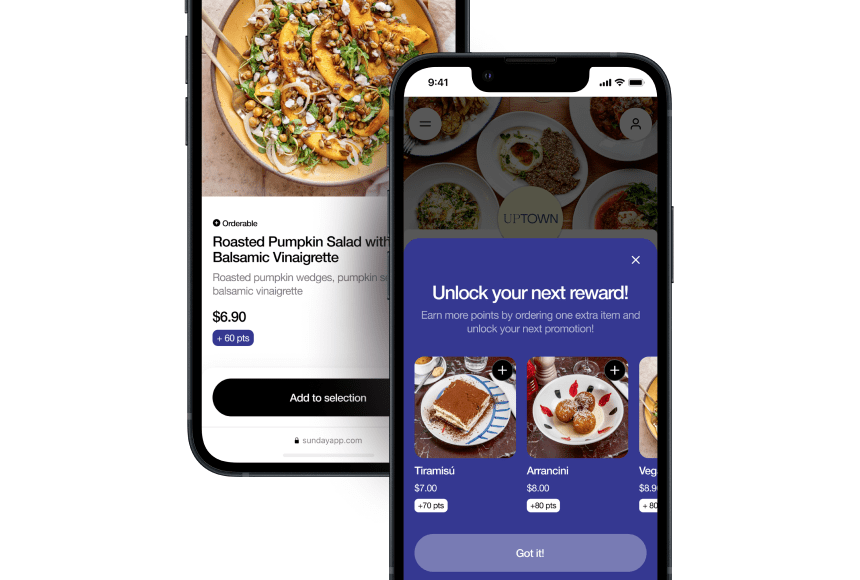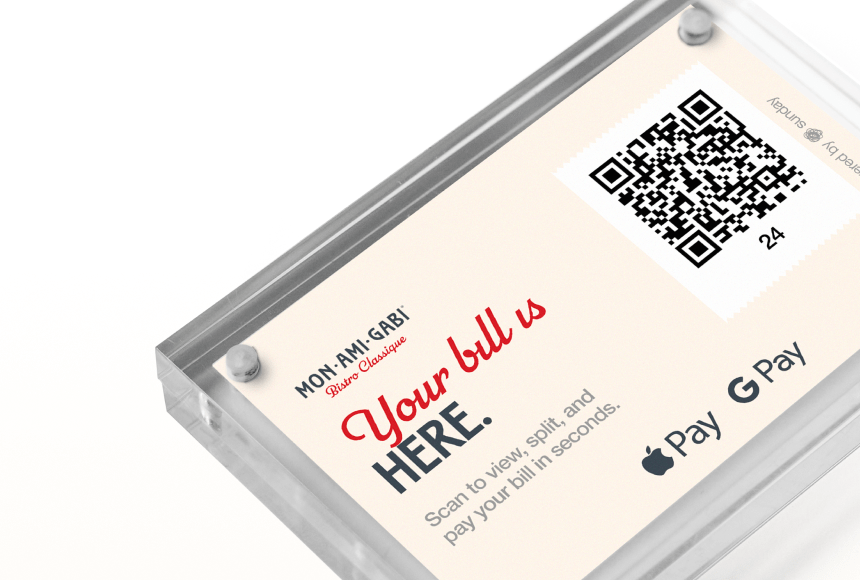
Why Your Restaurant Can’t Ignore the Rise of Digital Receipts
Embracing a Game-Changing Shift in Hospitality
Picture this moment at your restaurant: A guest sits back, happily satisfied with their meal, and asks for the check. Traditionally, you’d hand them a paper receipt alongside a leather bill holder. But times are changing fast. More and more, guests reach for smartphones, expecting seamless digital options—especially when it comes to receipts. Digital receipts, once seen as a trendy feature, have become a core guest expectation. Failing to offer them risks more than just looking old-fashioned. It can impact brand perception, drive away tech-savvy diners, and create inefficiencies in your operation. In a world dominated by phone interactions, the message is loud and clear: digital receipts aren’t just an extra—they’re the new standard.
Beyond appeasing guest preferences, digital receipts can boost your bottom line. They streamline the payment process, reduce paper costs, and open a direct channel for reconnecting with guests after they leave your venue. How did this seemingly small piece of paper get such a massive makeover? Let’s explore the forces pushing the rise of digital receipts, how they work in practice, and why your restaurant should jump on board.
The Rapid Shift from Paper to Digital
Paper receipts might not sound like a major budget line, but they eat up a surprising amount of resources. According to Green America’s Skip the Slip initiative, the United States uses more than 3 million trees and 9 billion gallons of water every year just to produce paper receipts. That’s an enormous environmental footprint. It also underscores how even the smallest details—like receipts—can affect the hospitality industry’s broader sustainability goals.
What’s fueling this push toward digital alternatives? Several factors:
- Contactless culture: The pandemic reinforced consumer preference for paperless interactions. Touchless menus, QR codes, and mobile payment methods soared in popularity, making digital receipts the logical next step.
- Guest convenience: People rarely want to keep track of flimsy paper slips. Emails or text-based receipts feel easier, more secure, and always at guests’ fingertips.
- Cost savings: Ordering rolls of receipt paper adds up. By shifting to digital receipts, your restaurant can reduce expenses and redirect funds to more pressing areas, like enhancing your menu or training staff.
- Sustainability concerns: Many diners care deeply about a restaurant’s environmental impact. Offering digital receipts signals you share their values.
According to the National Restaurant Association’s 2022 State of the Restaurant Industry report, a significant proportion of operators anticipate contactless and digital solutions will become standard practice. This shift is happening quickly, and it’s shaping what guests now expect when they settle their bill.
Why Guests Prefer Digital Receipts
We’ve all experienced sifting through a cluttered wallet trying to find a half-faded receipt. It’s nobody’s idea of fun. Today, restaurant guests increasingly want their receipts delivered directly to their new center of organization: their smartphone’s email or text messages. But convenience isn’t the only driver of digital adoption.
Here’s why guests prefer digital receipts:
- Instant access: Need to check a charge or fill out an expense report? Digital receipts are easy to find and don’t fade over time. They live permanently in someone’s email inbox, making returns or questions a breeze.
- Environmentally friendly: Even if guests don’t explicitly ask for it, offering digital options helps reduce paper waste. A growing population increasingly chooses businesses aligned with sustainability efforts.
- Enhanced security: Paper receipts left on the table can contain personal information. Digital receipts minimize that risk. Plus, if you email or text them, guests don’t have to manage sensitive documents physically.
- Integration with loyalty programs: Digital receipts can automatically sync to rewards platforms or loyalty apps. That means no complicated steps or misunderstandings about points—everything flows seamlessly.
Overall, digital receipts tap into the universal desire for frictionless processes. Guests want an experience that respects their time and preferences. If a payment process feels outdated or cumbersome, it can leave a sour aftertaste—even if the meal was top-notch.
How Digital Receipts Improve Your Restaurant’s Operations
Switching to digital receipts does more than satisfy a guest preference. It can transform behind-the-scenes operations in meaningful ways. Here’s how:
- Reduced administrative hassles: Paper-based systems have a knack for going wrong. Printers jam, ink cartridges need replacing, and that unending supply of receipts is costly. Digital receipts aren’t reliant on hardware that can break down in the middle of a busy dinner rush.
- Streamlined staff workflow: Your servers can focus on creating outstanding guest experiences instead of fussing with receipt printers or dealing with reprints. In a hectic environment, the fewer tasks your team juggles, the better.
- Data collection made easy: Digital receipts seamlessly capture transaction info. Want to analyze your sales patterns, average ticket sizes, or track popular menu items? The data is right at your fingertips. You’ll see clearer trends and get more accurate records.
- Faster payouts and tip management: By integrating a digital payment solution with tipping features, your team and your guests both benefit. Guests can conveniently leave a tip on any device, and your staff receives accurate, trackable gratuities. No more math mishaps or lost receipts.
Implementing an effective digital receipt system aligns with modern operational best practices. By eliminating paper, you declutter your entire close-of-day process, speed up service, and drastically cut down on waste—even if your establishment hasn’t fully embraced other digital solutions yet.
Leveraging Digital Receipts for Marketing & Guest Engagement
Think of digital receipts as post-meal postcards—opportunities to reconnect with guests once they’ve left your premises. The transaction doesn’t have to end the moment someone pays and walks out. Digital receipts can include special offers, invite diners to leave feedback on Google, or encourage them to choose your restaurant again for their next meal.
How does that work? Here’s a quick breakdown:
- Tailored promotions: Because digital receipts enter a guest’s inbox, they can carry personalized messages or promotions, like a discount on a future visit or a small bonus for leaving an online review.
- Feedback channels: A quick link to a survey or review site can capture opinions in real time. If a guest had a question or concern, you’ll immediately know and have a chance to respond.
- Loyalty integration: Some solutions tie digital receipts to reward points automatically. Guests see their updated balance, feel appreciated, and have a reason to return sooner.
From a marketing perspective, each receipt can serve as a bespoke communication tool. Instead of a generic “Thank You,” you can highlight your upcoming seasonal menu, mention your new brunch hours, or gently remind guests that you also offer catering services. The key is relevance: keep your message short, appealing, and valuable from the diner’s viewpoint.
Navigating Data Privacy and Guest Trust
Offering digital receipts opens up a whole new channel for connecting with your audience. However, with digital communications come concerns about data privacy. Guests must feel confident that sharing their email address or phone number doesn’t lead to a barrage of spam or a sale of their personal information. Trust matters—even more so in hospitality, where your relationship with guests is built on reliability and good experiences.
Address privacy concerns head-on:
- Obtain explicit consent: Always ask permission before sending digital receipts. Make it a standard part of your payment process to confirm the correct email or phone number.
- Adhere to regulations: Laws in the US—such as the CAN-SPAM Act—regulate how you can use digital contact info. Familiarize yourself with these rules to ensure you’re on the right side of compliance.
- Limit marketing emails: If you plan to send promotional campaigns after providing a digital receipt, clarify how frequently guests can expect them, and always offer an easy opt-out.
When you communicate transparently about data usage and respect guests’ choices, you bolster your credibility. Maintaining that trust results in a better reputation, repeat visits, and a broader customer base.
Practical Steps to Implement Digital Receipts at Your Restaurant
Switching to digital receipts might sound daunting, but it doesn’t have to be. Here’s a bite-sized guide to help you get started:
- Choose the right solution: Evaluate payment systems that automatically support digital receipts. Look for features like QR code payments, tipping options, and an intuitive interface for your team.
- Train your staff: Good training prevents confusion and frustration. Host short sessions to make sure your servers feel comfortable guiding guests through the digital payment process.
- Communicate with guests: Place small signs or mention verbally that you offer digital receipts. Many diners are delighted to know they won’t be given more paper to clutter their wallet.
- Integrate loyalty and feedback: If possible, link the digital receipt to your loyalty program and invite diners to leave a quick rating or review. This helps gather valuable insights on the spot.
- Optimize marketing opportunities: Work with your marketing team to shape each digital receipt as an extension of your brand. Include a personal “thank you” or a nudge to try your new dessert menu next time.
While the shift to digital receipts is relatively straightforward, it’s best done with a clear plan. Take advantage of the opportunity to rethink every step of your payment flow. If you already use QR codes for menus, layering on digital receipts becomes a natural evolution.
A Real-Life Example: Bringing the “Paperless” Vision to Life
Let’s cook up a quick scenario to illustrate the benefits. Imagine you own a casual bistro in a bustling city center. You notice your check presenters vanish from tables while your servers scramble to print receipts. It slows down table turnover and stretches guest wait times. You start losing out when busy lunch crowds pop in, see a waitlist, and decide to go elsewhere.
In comes the digital solution. You decide to use a payment platform that scans a QR code to bring up the check. Guests pay on their phone, choose to leave a tip, and receive a digital receipt via email. Instantly, you eliminate time spent waiting for a server to bring the check or run a credit card back and forth. You also stop reprinting receipts for the inevitable errors. Your staff is freed up to focus on hospitality: suggesting wine pairings or describing daily specials. As table turnover improves, you’re able to seat more guests and increase daily sales. Meanwhile, you’re saving on paper costs. Sounds like a win-win, right?
Ethical and Inclusive Implications of Digital Receipts
When implementing new technology, it’s important to consider inclusivity. Not every diner has a smartphone. Some may prefer a paper receipt due to habit or personal circumstances. You can maintain a balance between tech-forward solutions and traditional methods.
Offer a quick alternative without turning it into a hassle. If a guest wants a printout, that’s their right. Empower your servers to gracefully handle such requests. The transition to digital receipts shouldn’t come at the expense of guests who are less familiar with technology. With a thoughtful approach, your restaurant can lead on innovation and accessibility at the same time.
The Environmental Argument You Can’t Ignore
As the restaurant industry grapples with sustainability, the throwaway culture of paper receipts becomes harder to justify. Switching to digital receipts clarifies your stance on eco-conscious practices. It fits right alongside recycling waste, reducing single-use plastics, and sourcing locally. While you won’t overhaul your carbon footprint by removing paper receipts alone, every small decision you make helps define your brand as a responsible business.
Increasingly, guests seek out establishments that align with their own environmental values. Offer a paperless option, and you might spot a subtle yet notable lift in guest satisfaction. People love feeling like they’re part of positive change, and digital receipts provide an easy opportunity for diners to do their part.
Highlighting the Role of Tech Partners
Choosing who you partner with for digital receipts can influence the overall success of your initiative. Many payment solutions exist, but not all speak directly to the needs of restaurants. That’s why looking for a specialized approach—such as a user-friendly platform that simplifies mobile payments—can be helpful.
Look for providers that understand hospitality specifically. Do they streamline tip distribution? Do they integrate easily with your existing management systems? Can guests quickly post a Google review? You want to reduce friction, not add extra steps to your day. The best solutions will fit seamlessly into how you already operate and elevate your performance.
For instance, a platform like sunday offers QR code payments that immediately present guests with a digital receipt option, making the entire process smooth. It’s subtle and user-friendly—guests can see their order, add a tip, and finalize the transaction from their own device. The digital receipt arrives instantly in their inbox. Done and dusted, with no paper required.
Common Challenges and How to Overcome Them
Despite the many benefits, a few roadblocks might pop up along the road to paperless receipts. Here’s how to tackle them:
- Resistance to change: Some guests or servers might be wary. Emphasize that paper receipts are still available if needed, but that the digital option is simpler and faster. Short staff trainings and guest-facing prompts can smooth the transition.
- Tech hiccups: Internet connectivity issues can occur. Make sure you have a reliable Wi-Fi setup or an offline mode to handle busy times without disruptions.
- Data errors: If a guest mistypes their email address, the receipt may bounce. Encourage staff to confirm the address or phone number. Some solutions autofill or save info for returning customers, reducing mistakes.
- Legal compliance: Different states have varying regulations around receipt retention. Ensure your digital system meets these legal requirements. Check local laws or consult a professional to avoid surprises.
Every solution has a learning curve. But once you’ve addressed potential challenges, digital receipts usually enhance your operations far more than paper processes ever did.
A Table-by-Table Glance at the Benefits
| Aspect | Paper Receipt | Digital Receipt |
|---|---|---|
| Cost | Ongoing paper and printer costs. | Minimal after initial setup. |
| Environmental Impact | Contributes to deforestation and waste. | Paper-free and more sustainable. |
| Convenience | Easily lost or damaged. | Accessible anytime by phone or email. |
| Marketing | Limited real estate, less personalization. | Can include offers, loyalty points, and review links. |
| Data Insights | Manual entry, higher chance of error. | Instant, automatically stored in systems. |
The Future of Receipts in a Digitally Driven World
Beyond delivering email or text receipts, the horizon for digital receipts includes dynamic features like detailed itemization, cost-splitting, and even personalized dish recommendations based on order history. Imagine a scenario where a frequent guest automatically gets a custom suggestion for dessert—or sees an alert that a favorite entrée is back on the menu, all as part of their receipt experience. The possibilities grow as technology evolves.
These developments bring hospitality closer to the dynamic data-driven experiences that retailers have embraced. In the restaurant world, personal touch is everything, and digital receipts can transform each transaction into momentary brand-building. As more restaurants adopt advanced digital tools, the standard of what guests consider “normal service” will continue to evolve. Keeping up now is far easier than playing catch-up later.
The Real Bottom Line: Creating Memorable Guest Moments
At its heart, a restaurant thrives on delighting guests. Anything that removes friction or adds value to their experience is worth exploring. Digital receipts may seem like a small tweak, but they stand for more than a mere paper swap. They represent a more streamlined, sustainable, and guest-friendly approach to hospitality.
By prioritizing convenience, trust, and modern technology, your restaurant stays on top of evolving trends—and with that positioning comes a deeper connection to your guests. They’ll remember that extra care and consideration the next time they decide where to dine. In a crowded market, that’s a powerful differentiator.
Frequently Asked Questions (FAQ)
Will older customers accept digital receipts?
Many will, though some prefer traditional paper. Offering both options gives all guests a choice. Emphasize the simplicity of digital receipts—no paper clutter or misplaced slips—and make sure servers are ready to provide paper if someone isn’t comfortable with a smartphone.
What if my internet goes down?
Look for a digital receipt system that offers an offline mode or a backup plan. Many providers store transaction data locally and sync it once the connection is restored. A robust setup ensures you’re not left scrambling during peak times.
How do I prevent my digital receipts from being lost in spam?
Verify the recipient’s email address or phone number. Provide a short heads-up on the user interface or verbally confirm the details with the customer. Using a trusted payment system that follows best emailing practices also reduces spam-related issues.
Is it expensive to switch to digital receipts?
The initial setup may require an investment in a digital payment solution or upgrading your existing system. Over the long run, you’ll likely save money on paper, printer maintenance, and labor. Plus, the marketing advantages and enhanced guest experience often offset upfront costs.
Can digital receipts help me build my customer database?
Yes. When someone opts in to receive an email or text receipt, you can ask for consent to share promotions or news. This gives you an ethically gathered list of interested diners. Just remember to respect privacy preferences and data regulations.




